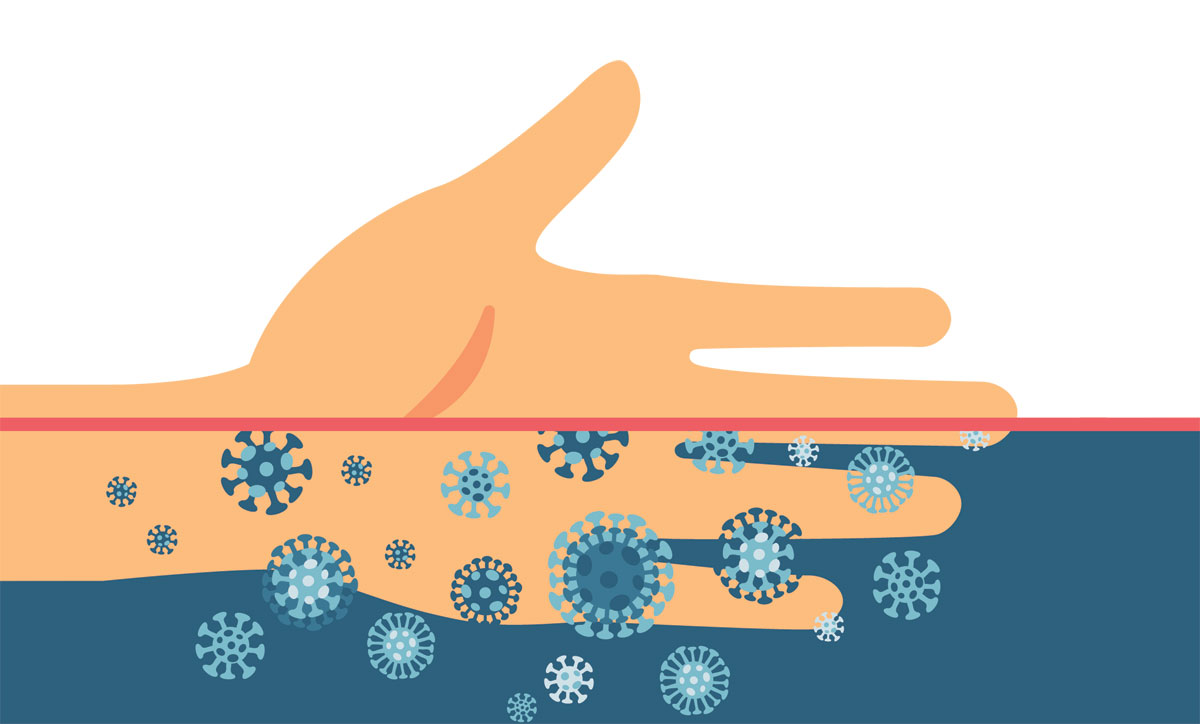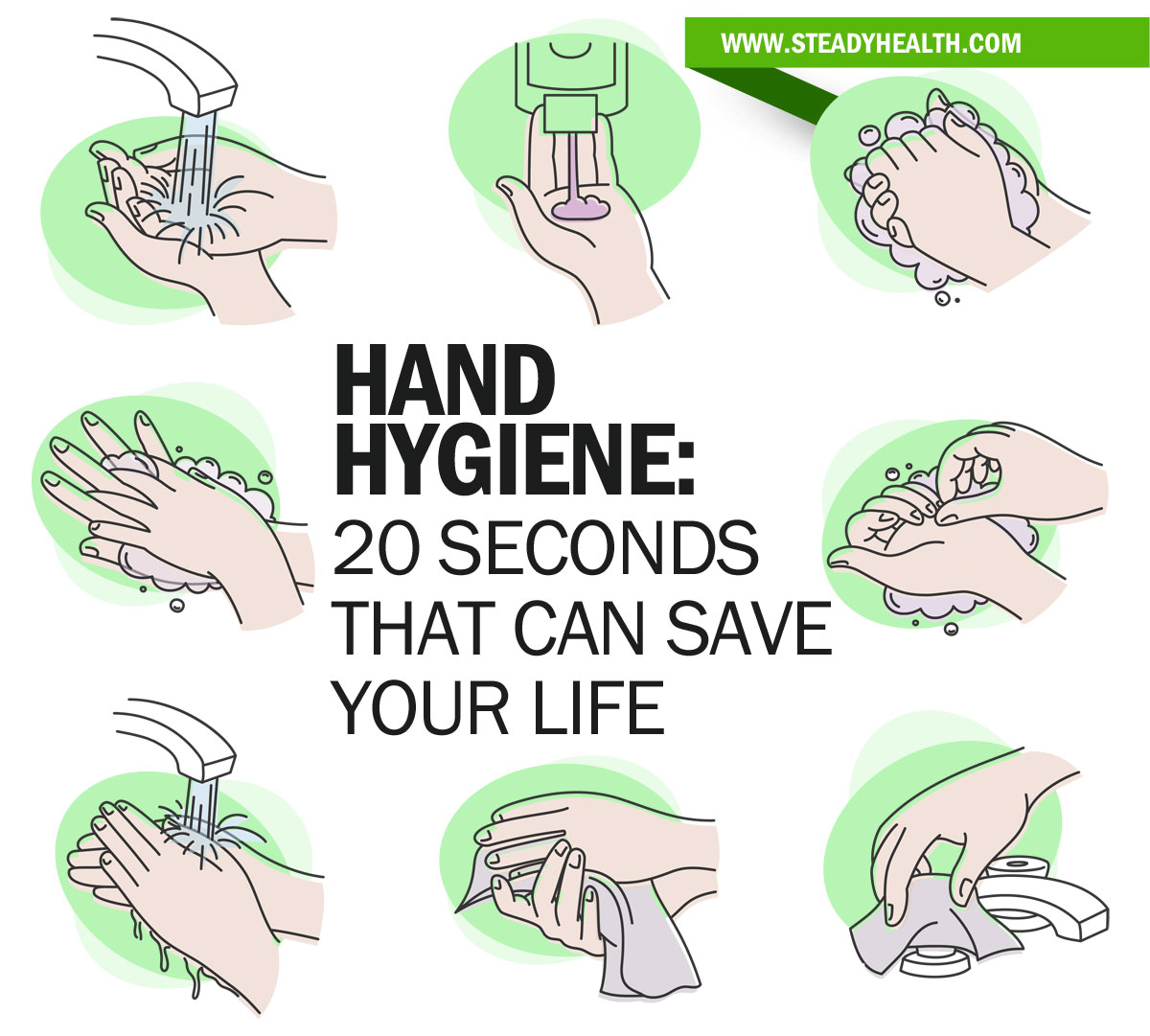Health awareness campaigns tend to be profoundly, and often painfully, boring.
The whole genre can be tarred with the same uninspiring brush, but handwashing campaigns have got to be among the worst. No grown human wants to be lectured about the quick, simple, and life-saving nature of handwashing, because even though many people simply don't wash their hands properly, we all know we should.
We, at SteadyHealth, have covered the subject half to death already by participating in past handwashing awareness campaigns because these campaigns do, actually, make a difference. Successful awareness campaigns gradually help awareness seep into public minds. Hear the same monotone message often enough, and you may even change your behavior.

Still, you wouldn't have clicked on this last year, would you?
Now, we all want to know that we're practicing hand hygiene properly, so this year, we'll skip the inspiration and get straight to the practical stuff.
Hand hygiene in a new era: Are you washing your hands often enough?
Yes, you're still meant to wash your hands after using the bathroom, changing diapers, tending to wounds, and even after snuggling up with your pets, as well as before and while preparing food. New "handwashing moments" have joined the list, however, and the CDC is now officially recommending that you wash your hands after touching any publicly-accessible surface.
Wash your hands as soon as you get home — touching as close to nothing else as you can possibly achieve before you make it to the tap. You've probably already got your "never touch your face with dirty hands" routine down pat by now.
In case you're still not sure whether it's really necessary to perform hand hygiene quite that often, remember that the virus that causes COVID-19 has a fairly long “shelf life”:
- SARS-CoV-2 can survive on copper for around four hours.
- Cardboard boxes are suspect for up to 24 hours.
- Stainless steel and plastic, which most of our food is packaged in, can harbor SARS-CoV-2 for as long as two or three days!
Yet another refresher course: Are you really washing your hands properly, even now?
Are you following all the proper steps of serious handwashing? Here's the correct order, duration, and some bonus tips:
- Turn the tap on and wet your hands. If your skin has been dry since you've upped your hand hygiene game, learn a lesson from healthcare professionals, and use cold rather than hot water to reduce your risk of dermatitis.
- Apply soap — enough to create a nice and visible lather.
- Rub your hands together and vigorously scrub all of their surfaces for 20 seconds. As you do so, remember that folks are most likely to miss their thumbs, fingertips, and the area between their fingers — pay special attention to these. Keep your nails short, and clean under them by rubbing the tip of your fingers into your palms as you wash your hands.
- Rinse your hands with water, until all the soap and pathogens are gone.
- Use a clean (disposable if you want) towel to dry your hands — and use it to turn the tap off, too, so you don't have to touch that again.

Where does this magic number of 20 seconds come from? Research has shown that this duration maximizes the germ-killing power of your efforts, while scrubbing your hands any longer doesn't offer extra benefit. Microbiologist Boris Popovic explains: “Washing your hands for 20 seconds using soap removes twice as many bacteria than washing them without soap for five seconds.”
OK, makes sense — but COVID-19 is a virus and not a bacterium, so how does that work? Boris continues:
"Well, the point is that washing hands removes filth and lipids from our hands. Some viruses can be killed with soap, while others cannot. Luckily for us, coronaviruses have a lipid layer in their membrane, so using soap kills them. But even if it didn't, soap removes the fatty substances from our palms, and all different types of microorganisms dwell there. So, by using soap, you kill some microbes, while the others are simply washed away."
What if you don’t have access to soap and water?
We've all heard reports of hand sanitizer going out of stock, and maybe it's even happened where you live.
The American CDC considers hand sanitizer that contains at least 60 percent alcohol an acceptable alternative when you can’t use soap and water. Australian medical sources, meanwhile, recommend using hand sanitizer that contains at least 80 percent ethanol or 75 percent isopropyl alcohol.
This definitely means that buying hand sanitizer from a pharmacy is better than making your own at home with untested recipes, as many people on social media have been talking about, since adding things like herbs, aloe vera, water, and essential oils can dilute the alcohol to the point where it's no longer effective.
What if you use gloves? Is handwashing not so important then?
Sorry, but hand hygiene still matters.
Gloves are a "second skin", but they touch anything your hands would touch if you weren't wearing them. They get dirty and germy as you touch doorknobs, shopping carts, money, and whatever else you forgot you were even in contact with.
A final word
The COVID-19 pandemic has officially made hand hygiene an interesting topic. As many countries gradually ease their pandemic-imposed restrictions and struggle to settle into a new normal, it's important that we never return to a place of complacency.
Yes, washing your hands frequently is a bit of a pain. But even when a vaccine for COVID-19 appears on the market, remember that thousands of people all around the world die from infections they got while receiving healthcare, many of which could have been prevented with proper hand hygiene. Remember that proper hand hygiene still reduces your risk of diarrhea, pneumonia, and respiratory illnesses like common colds, significantly.
- Photo courtesy of SteadyHealth
- meridian.allenpress.com/jfp/article/80/6/1022/200017/Quantifying-the-Effects-of-Water-Temperature-Soap
- https://watermark.silverchair.com/0362-028x_jfp-14-245.pdf?token=AQECAHi208BE49Ooan9kkhW_Ercy7Dm3ZL_9Cf3qfKAc485ysgAAAoYwggKCBgkqhkiG9w0BBwagggJzMIICbwIBADCCAmgGCSqGSIb3DQEHATAeBglghkgBZQMEAS4wEQQM8YlVJK0v1Ft-jHrnAgEQgIICOdWs0bgzU5g-QwQcAVdPE2u0klSjp6iQYmfVOZi7C5BfdoXKnj9TQ1H85kBxjMM9PwdHt3nYTvhOsbKno54g4DyzfMB94K3wSVswf_j5IKoHvm96eJ4RPyaiLMUBw88ZOzb3AgMM6YfSwx5JFozP59iWD--KKo4DUPsKixnE-N73bGFjuCBorHPGngNWXG9EihxAh7dOEbxAa8qF1Ep03GcN9hIC7TUCX9jLshZk7wacS95IlSDuuI6FlcmpoSu928iQEVg8R8qieFXABYa0zjwj0CGzVHrv5BjA8rqWJcdWJgeAZhcyzTFQsF9sRrBRnYD1FQg4YV_Y7XKfW3JI-qoGMcFYOE2B0gSLjomcuAXXnTDfu0Fg9L_1mMnH9cxCq1fOA7KcQw30vbV7dvlQE-FKuxyN9GhiFVu7MXRbFTr9RZwkgdqR5EvGBxsOmE3-zFAepff1c-T0T9iHCIlzvjK_JpRdjbTORwpq2-mC-Fj-rqB-uqsMQ3zp3B2ZwkYOTwxbCFB9JzAVAou4H6OrCli8Rfd1GvyN-d5fnOpZv5qW2-h85sTh0HWKIXgFs3SHWYed6rtwHNVQNbmE85p56F0w6gI-Q89LHFnuHLCHwTM-1ge84H_eSOavdg5vdmSu8-p3SVQ-la6Ct6iHZ23uAPqzjEOeL2vXamMlgNwIGNdvtHidJ6ZhNqJQvoSRtWnixds5TmV_6Or7Lymc_Yrz5DQXGQsq7d2sJU4BifwT59xKz1C83vExxXVy
- http://www.anmf.org.au/documents/ANMF_Evidence_Brief_COVID-19-Hand_sanitiser_ingredients.pdf
- https://digitalcommons.longwood.edu/cgi/viewcontent.cgi?article=1167&context=spring_showcase


Your thoughts on this